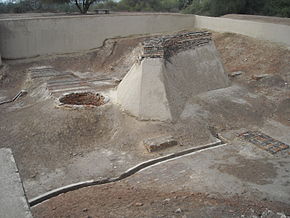The story starts with Migration of Homo-sapiens into India and it is an old story.
According to currently accepted theory homo-sapiens originated from Africa around 150,000 years back. From there they migrated to rest of the world. After the end of the last ice age, around 10,000 BC, most of the earth was occupied.
The migration to India happened in three phases.
- Around 80,000 years back, movement took place via India to South-East Asia and China. Subsequently, the erruption of Mt. Toba wiped out the entire population of India.
- Around 55,000 years back people migrated from South-East Asia to India.
- About the same time another group migrated from South-West Asia.The Harappan Civilisation

The civilization spread over a vast geographical region, from the high mountains of Baluchistan and Afghanistan to the coastal regions of Makran, Sindh and Gujarat. Large cities and smaller towns grew up along the major trade routes as administrative and ritual centers. During the full urban phase of this civilization, there is evidence for trade contact with the surrounding cultures in the Arabian gulf, West and Central Asia and peninsular India. Some of the technologies, architecture, artistic symbols and aspects of social organization that characterized the first urban centers of the Indus Civilization have continued up to the present in the urban setting of traditional South Asian cities.
Time Line of Indus Valley Civilization
Based on the archeological exploration done in the last few decades, our knowledge about the civilisation has significantly improved. The time period has significantly expanded going back to 7000 BC for first sign of agriculture and coming forward to 1300 BC for the last occupation of the cities.
- Start of Agriculture 7000 BC to 5500 BC
- Early Harappan phase 5500 BC to 2600 BC
- Mature Harappan phase 2600 BC to 1900 BC
- Late Harappan phase 1900 BC to 1300 BC
Mehrgarh is earliest known agricultural site of this civilisation. It dates back to 7000 BC. There are also evidences of the use of cotton. Somewhere between 2600 and 2000 BC, the city seems to have been largely abandoned.Rice was the staple food in Mehrgarh .Technological advancement was there as prehistoric dentistry evidence has been found in Mehrgarh.

A Bathing Platform in Harappa:Image from Wikipedia
Harappa is one of the largest and most important cities of the Indus Valley Civilization. This is one of the only sites where an entire sequence has been recovered that spans the history of Indus cities. The overall size of the city was over 150 hectares. Current evidence suggests that Harappa was occupied till 1300 BC.The site is in Punjab, Pakistan, about 24 km west of Sahiwal. The site takes its name from a modern village located near the former course of the Ravi River. The current village of Harappa is 6 km from the ancient site. Although modern Harappa has a legacy railway station from the period of the British Raj, it is today just a small crossroads town of population 15,000.

Mahenjo-daro had a population between 35,000 and 80,000 and occupies an area over 250 hectares. At its peak it could have been the largest city in the world. Mohenjo-daro is one of the largest settlements of the ancient Indus Valley civilization, and one of the world’s earliest major urban settlements, contemporaneous with the civilizations of ancient Egypt.

Remains of Lower Town of Lothal
Lothal had the earliest known dock found in the world, equipped to berth and service ships. It spans an area of 37 meters from east to west and nearly 22 meters from north to south. Boats could dock at Lothal in the 1850’s. In 1942 timber was brought from Baruch to nearby Sagarwala. It is said that then the dockyard could hold 30 ships of 60 tons each or 60 ships of 30 tons each. This would be comparable to the modern docks at Vishakapatnam.It is one of the most prominent cities of the ancient Indus valley civilisation, located in the Bhāl region of the modern state of Gujarāt and dating from 3700 BCE. Discovered in 1954, Lothal was excavated from 13 February 1955 to 19 May 1960 by the Archaeological Survey of India (ASI), the official Indian government agency for the preservation of ancient monuments.
Dholavira has a rectangular shape and organization, and is spread over 100 hectares. One of the unique features of Dholavira is the sophisticated water conservation system of channels and reservoirs, the earliest found anywhere in the world, and of which three are exposed. Another of the most dramatic discoveries at Dholavira was made in one of the side rooms of the northern gateway of the city. The Harappans had arranged and set pieces of gypsum (a kind of mineral) to form ten large letters on a big wooden board. At some point of time the board fell down flat on its face. The wood decayed, but the arrangement of the letters survived. Dholavira is an archaeological site at Khadirbet in Bhachau Taluka of Kutch District, in the state of Gujarat in western India, which has taken its name from a modern-day village 1 kilometre south of it. This village is 165 km from Radhanpur. Also known locally as Kotada timba, the site contains ruins of an ancient Indus Valley Civilization/Harappan city. It is one of the five largest Harappan sitesand most prominent archaeological sites in India belonging to the Indus Valley Civilization. It is also considered as having been the grandest of cities of its time. It is located on Khadir bet island in the Kutch Desert Wildlife Sanctuary in the Great Rann of Kutch. The 47 ha quadrangular city lay between two seasonal streams, the Mansar in the north and Manhar in the south.The site was occupied from c.2650 BCE, declining slowly after about 2100 BCE. It was briefly abandoned then reoccupied until c.1450 BCE.
Link(s), Source(s) and Inspiration(s):
Wikipedia

Pingback: Dimensions of Smart City | Rashid's Blog: An Educational Portal